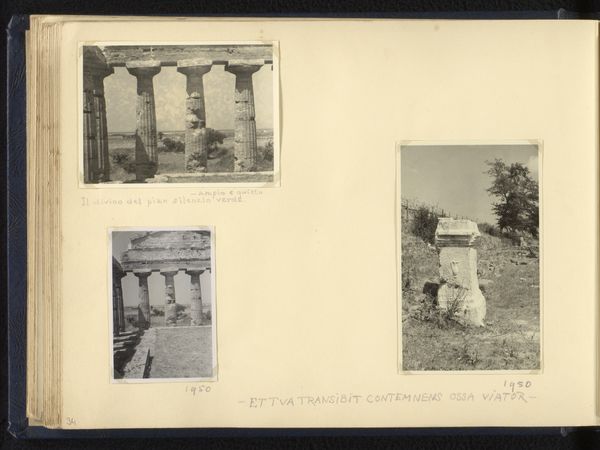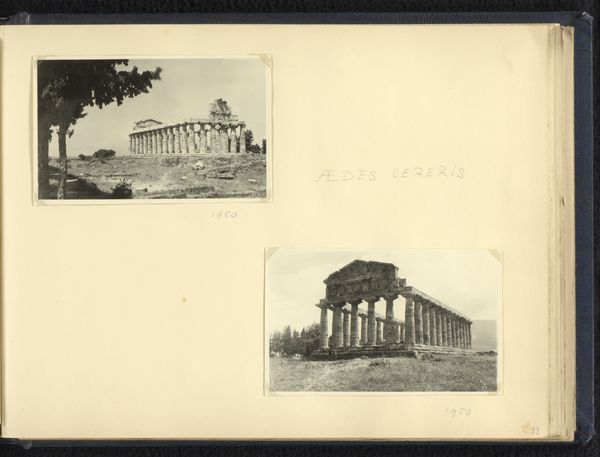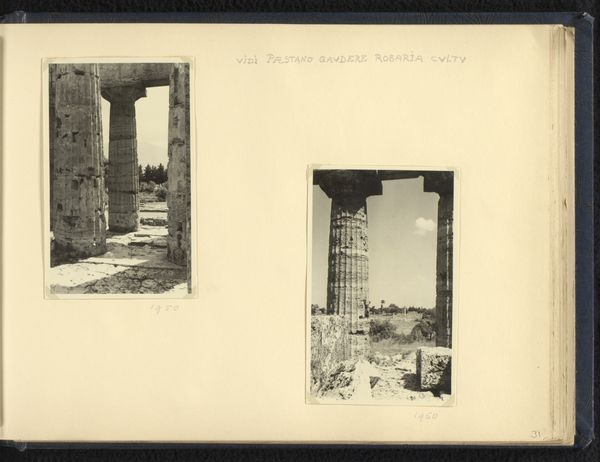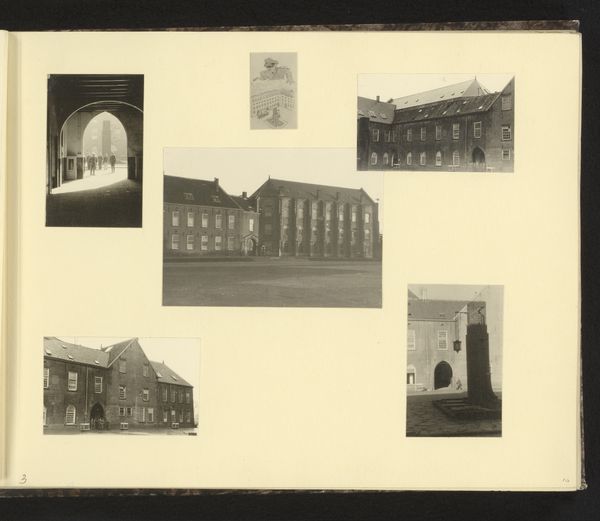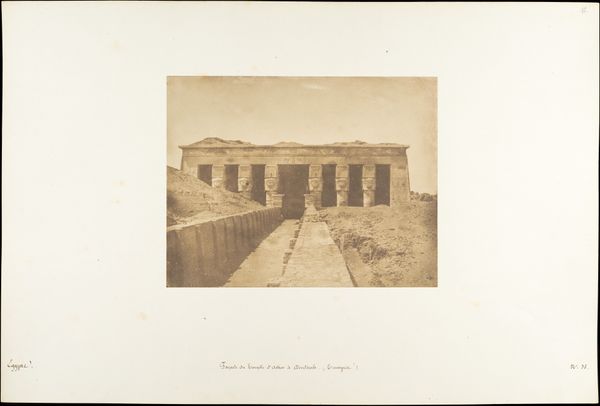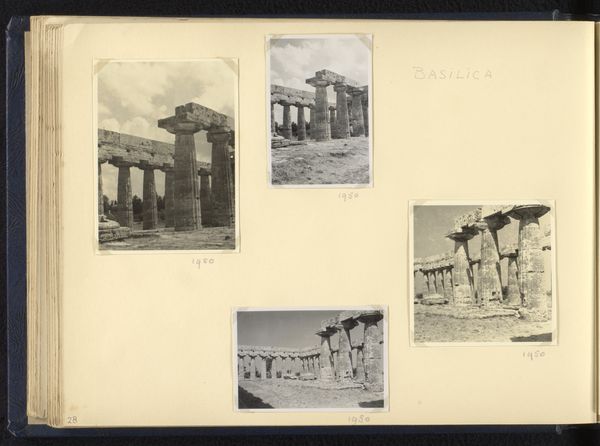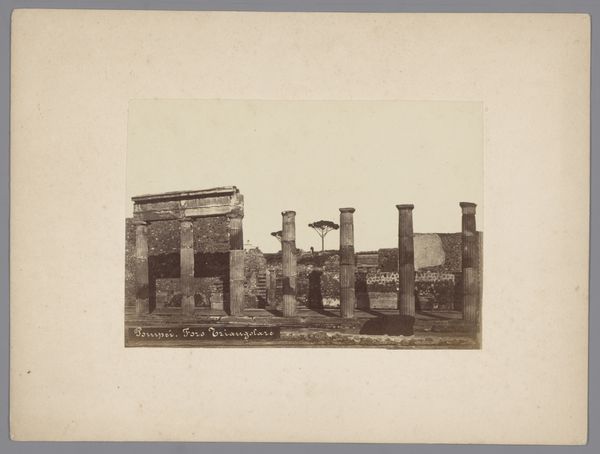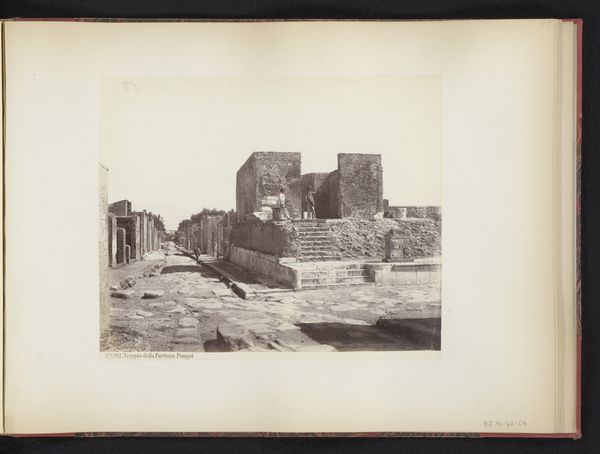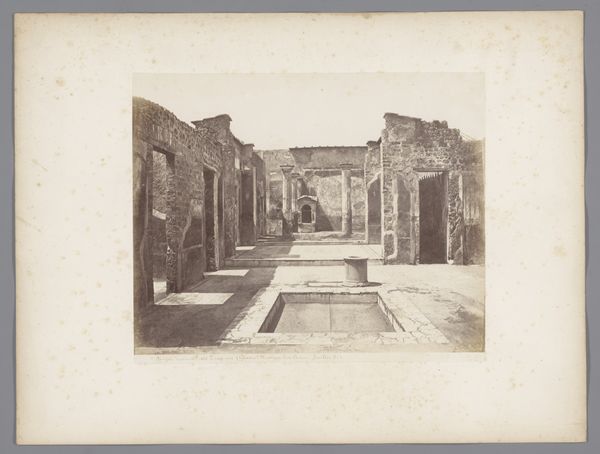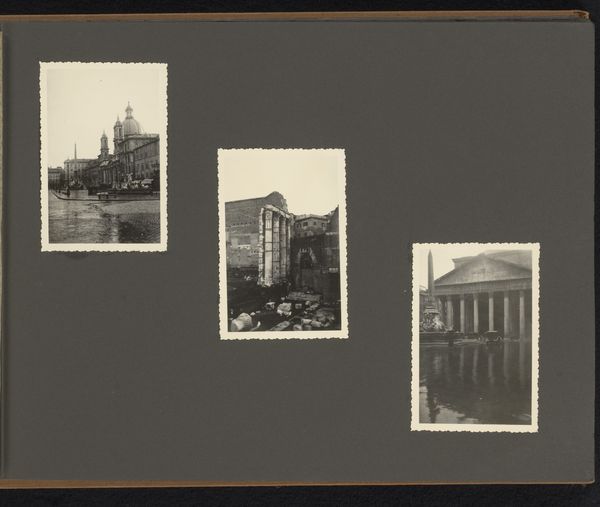
photography, gelatin-silver-print
landscape
photography
ancient-mediterranean
gelatin-silver-print
cityscape
Dimensions: height 232 mm, width 336 mm
Copyright: Rijks Museum: Open Domain
Curator: Here we have Norbert van den Berg's "Twee foto's van de tempel van Hera in Paestum," two photographs of the Temple of Hera, captured in 1950. The prints are gelatin-silver, providing a delicate grayscale tonality. Editor: Immediately, the somber tone of the photographs strikes me. The weathered stone, rendered in monochrome, evokes a sense of the passage of time and the weight of history, even myth. Curator: Indeed, the temple, also historically misidentified as a temple to Neptune as indicated by the handwritten title next to one image, has been a focal point of classical imagination. Its very image carries cultural weight. Editor: And there’s an intriguing duality here. Two images on one page: one presents the temple within the wider landscape, almost swallowed by it. The other zooms in, monumentalizing the columns, emphasizing their structural integrity against all odds. This placement almost feels curated within the album, doesn't it? Curator: Absolutely. Each view provides a symbolic perspective. The wide shot hints at humanity’s insignificance against nature's power, while the close-up celebrates our enduring ambition and ingenuity manifested through architecture. Notice also how Van den Berg frames each image with so much surrounding untouched space on the album page; a kind of respectful distance. Editor: The use of gelatin silver print really enhances this feeling of enduring, somehow fragile memory, a preserved moment in history. I can’t help but think of how photographs like this shaped the Western world’s romantic vision of classical antiquity during the post-war period, reminding it of some golden age while still bearing the scars of time. Curator: It reminds us of a visual echo across the ages, subtly reshaping how we interpret historical narratives, myth, and cultural inheritance. I find that powerful. Editor: I agree; this image, these images offer more than architectural record; they engage with how historical and artistic legacies are constructed and perceived by different audiences across different generations. Food for thought!
Comments
No comments
Be the first to comment and join the conversation on the ultimate creative platform.
